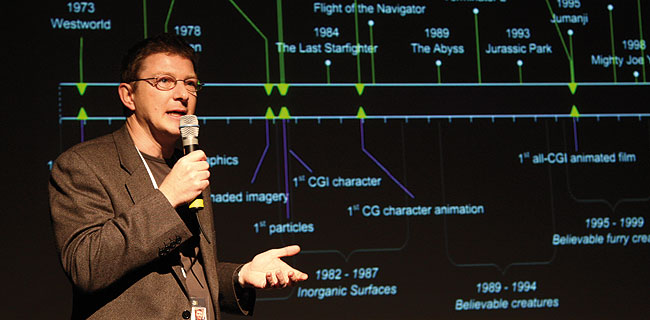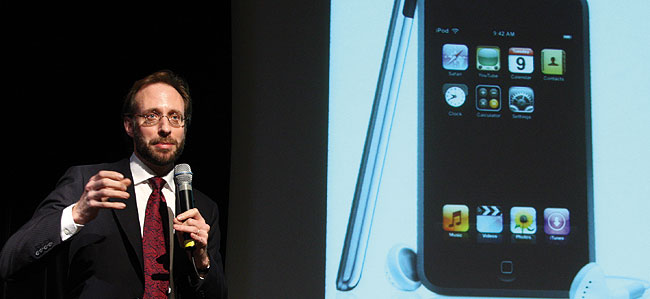A pilot of the pioneering IES SketchUp integration causes excitement about sustainable design at Broadway Malyan.
The recent launch of the IES VE SketchUp plug-in caused great excitement at Broadway Malyan. “In many ways the interface was what we had been waiting and looking for,” said Stephen Choi, sustainable design co-ordinator at Broadway Malyan. “We tried many of the interfaces between CAD design and energy/performance analysis tools, but none had offered the tightness and iterative capabilities we were looking for.”
Ian Walker, head of environmental engineering was equally impressed. “The best part of Google SketchUp is the iterative, very tactile and malleable modelling capabilities; the best part of IES (Virtual Environment) is the variety and depth of analysis capabilities. Combined, you get the best of both worlds – the capability to undertake faster more effective energy and performance analysis in an integrated and iterative manner that works truly as part of the design process.”
The IES VE SketchUp plug-in both enhances the capabilities of SketchUp and makes the quantitative green design power of IES more accessible. Since its launch in August 2008, Broadway Malyan has been piloting use of IES SketchUp on key projects in London and the UAE offices – including single dwellings, large masterplanning, streetscaping and mixed use developments.

Resource efficient design, technically informed staff and innovation are key company values for Broadway Malyan. The Sustainability unit works at several levels across the business; the ‘core’ unit supports key sustainability gurus in each office, while the rest of the practice maintains a general level of integrated understanding.
Kevin Leahy, main board director of Broadway Malyan UAE said: “Broadway Malyan is passionate about making sustainability fundamental to the design process throughout the practice and believes that the IES/SketchUp interface demonstrates an innovative way to adopt and embed new approaches and methods of working as part of a joined up, integrated team effort.”
Stephen Choi said that the pilot had been incredibly successful. “We are planning to roll out use of the IES SketchUp integration at an exponential pace, and aim to have the software in common use by all within the practice at the end of 2009.”
Ian Walker sees great potential for the software. “I think that this development could be as significant for the building design industry as the introduction of AutoCAD in the late 80’s – it might just be the catalyst to joining up environmental thinking between the architect and engineer,” he said. “The only successful way to approach sustainable design is through integration across the entire design process.”
Improved collaboration
Broadway Malyan has found that the IES SketchUp integration has greatly sped up the process of undertaking quantitative environmental analysis at the very initial masterplanning and massing stages. How factors such as mass, orientation, shape, streetscapes and shading devices affect key environmental targets can now be assessed. It has brought design teams together and ensured that analysis is not an isolated, non- iterative activity.
“On a recent masterplanning project I was able to sit with the client and go back and forth on iterations with environmental feedback at each stage within one and a half hours. In the past it would have taken us two to three days to re-model the building before we could give any performance analysis feedback. The opportunity would have been missed,” said Stephen Choi. “The level of collaboration we achieved was only possible because of the speed analysis could be undertaken.
“On another refurbishment project we needed to create an energy model of the existing building to use as a base case, but we only had PDF plans of the building. As it is so quick and easy to model in SketchUp we were able to create a 3D model of the building within 10 minutes and import it to IES using the plug-in in order to run the energy analysis,” he continued.
“As simple as it sounds this ability to quickly undertake environmental analysis helps us ensure that any sustainable solution ideas are not dropped as the design progresses and that the design is kept on track energy and performance wise. It enables us to look at how energy use, carbon emission, solar and daylight are affected at key design iterations right from the very initial stages and then at increasing levels of detail as the architectural design progresses.”

Broadway Malyan also found that, as well as offering faster, more effective collaboration, the following business advantages were offered by the IES SketchUp integration:
- Reduced expenditure on external consultants;
- Trebled the output capabilities of its environmental engineers;
- Less re-design needed and ultimately better performing designs were achieved, cutting costs and increasing competitive differentiation;
- The combined visual power of SketchUp alongside the quantitative IES results provides incredibly valuable material for planning and other reports;
- Keeps Broadway Malyan at the cutting edge of sustainable design innovation.
“The integration has proven to be a useful tool for carrying out the necessary assessments and making designs better, and has promoted the key value that good design is sustainable design,” said Stephen Choi. “I noticed that on the pilot projects when the architects knew that their designs were being tested in a tangible quantitative method, the way they thought about the design started to change. This and the analysis feedback was a learning catalyst for them. A greater understanding of the non-visual effect the lines they were drawing started to grow and over time a better ballpark appreciation of what design elements mean in terms of energy use, solar and daylight performance developed.”
The future
Throughout the pilot both Stephen Choi and Ian Walker found it relatively easy to adjust to the drawing conventions required within SketchUp to ensure the smooth transition of the model into IES analysis. They were both impressed by the accuracy – “nothing was lost in translation”.
“Critically, you do not need to fundamentally change the way you design in SketchUp, you just need to add a few conventions on top,” said Ian Walker. “Consequently, we are confident that the combined use of SketchUp and IES will become so useful within Broadway Malyan that it will be indispensible.”
Broadway Malyan is starting to educate key staff in the drawing conventions and how to most effectively use the IES SketchUp integration in an iterative way within the design process. The programme will grow exponentially until the integration is in use by all staff. It is hoped that this can be achieved by the end of 2009.
The ‘good design is sustainable design’ ethos promoted by quantitative analysis via the IES SketchUp integration has already made a great impact at Broadway Malyan. Architects get quick environmental feedback on design iterations and environmental engineers can input more into the design. More effective collaboration and cross-discipline understanding has been achieved.
www.iesve.comwww.broadwaymalyan.com






